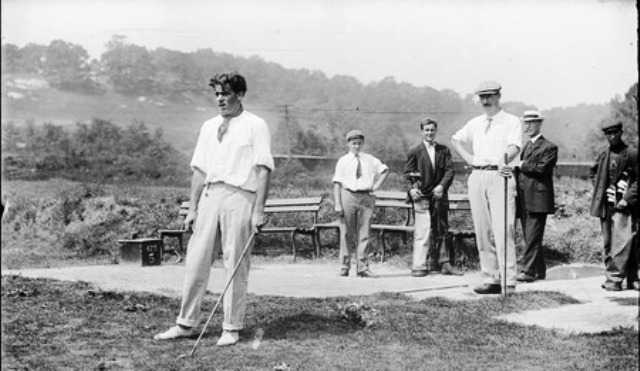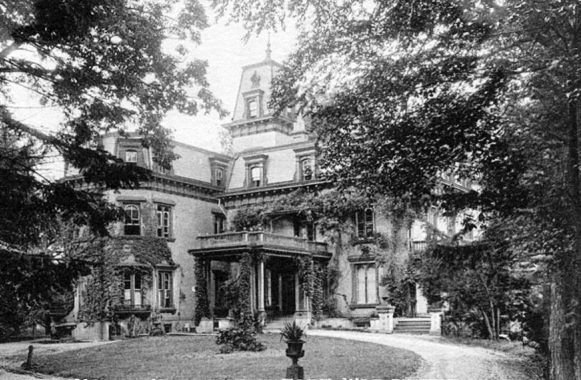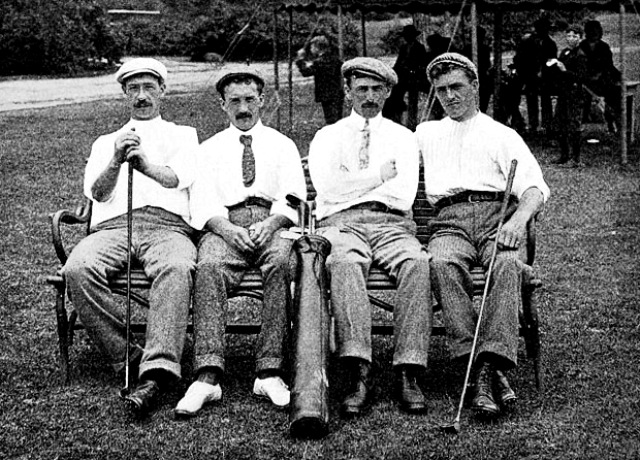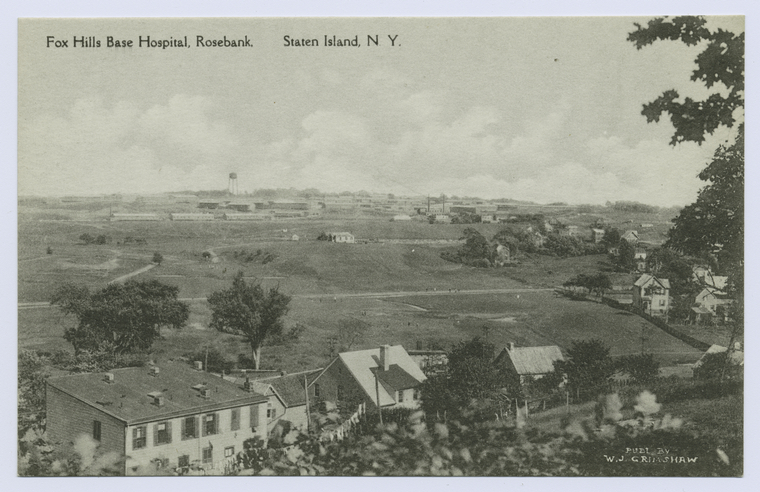Staten Island once was home to more than a dozen golf courses. The first was Harbor Hill, which opened in 1878 and was bounded by Brighton, Lafayette, and Prospect Avenue in New Brighton. Another popular course was the semi-private Fox Hills Golf Course in Clifton, which opened in 1900 and was Staten Island’s first 18-hole course.

Staten Island – the Borough of Richmond – was also once home to hundreds of goats. New York State Governor Al Smith (1923-28) said the first time he visited the island, there were four goats to every human.

In 1900, members of the new Fox Hills Golf Club overlooking the Narrows began complaining to authorities about the goats that were running at large and interfering with their game. They claimed that the goats came from “Goatville,” a settlement near Rosebank inhabited primarily by Italian immigrants who held tightly to the old country customs and religion.
The Health Department in the Borough of Richmond went to war against the goats and their owners. The police also got involved, including Sergeant Shay of the Stapleton Police, who issued summonses to a number of goat owners for violating the sanitary code by keeping goats without a license.

A Brief History of Fox Hills
In the 19th century, the area we now call Clifton and Concord was only a small rural hamlet with fishing ponds and wooded trails. Around 1860, Louis Henry Meyer, the former president of the Fort Wayne Railway company and one of the founders of the Staten Island Savings Bank, purchased 18 acres of land along present-day Fingerboard Road.

This acreage was part of a land grant dating back to 1685, and had been previously owned by Samuel H. Kelly (1685), George Brown (1691), Isaac Simonson (1749), Samuel Bowne (1852), and Manuel X Harmony (1859). Meyer invested $800,000 in Samuel Bowne’s manor home to make it one of the premier homes on Staten Island. In doing so, Meyer joined an exclusive group of men who established estates around the borough and called themselves the “Staten Island Barons.”
Two years after Meyer’s death in 1898, Fox Hills Golf Club was founded with 200 members. The 18-hole course, which had been laid out on the former Meyer estate by the Staten Island Cricket Club in 1899, boasted the finest links in the tri-state area, with numerous sand traps and a large pond creating challenging obstacles for even the best golfers. (The 13th hole was so difficult it was nicknamed Hell’s Kitchen.) Its grounds encompassed what is today Park Hill (and the Park Hill Apartments), Celebration, and Eibs Pond.

The course was reportedly designed by Isaac Mackie, a native of Scotland and apprentice golf club maker who came to the U.S. to become a professional at Fox Hills. Mackie also competed on a national level in the U.S. Open from 1901 to 1921, and won the Eastern PGA Championship in 1908 at Fox Hills.

In 1918 during the first World War, Hoff General Hospital No. 41 was built on land adjacent to the Fox Hills Golf Course. Constructed in a record four months at a cost of $2 million, the facility was the largest army hospital in the world with a capacity for 3,000 patients.
The Fox Hills Base Hospital, as it became known, operated until 1922, when it was determined that the rundown hospital had become a firetrap. The facility closed on March 7, 1922, and the few remaining patients were transferred to Sea View Hospital.

With the arrival of the Great Depression, the Fox Hills Golf Club was no longer sustainable. The club closed its doors in 1935. By that time, the goats were long gone. (Albeit, Staten Island was New York’s last stand for goats: In 1928, The New York Times reported that 130 Staten Island residents were still licensed to keep goats.)
During World War II, the U.S. Army reactivated the old Fox Hills property to serve as an army base, an Italian prisoners of war camp, and a trading post along Vanderbilt Avenue. When the war ended, the barracks became makeshift homes for veterans who faced a severe housing shortage in the late 1940s and early 1950s. The facility shut down completely in the early 1950s.

If you enjoyed this golf story, you may enjoy reading about Lillian Russell, the feline mascot of the Dyker Meadow Golf Course in Brooklyn.




Loved it, had to e-mail to my husband an avid golfer, I read your posts via e-mail, they really are brilliant.
Thank you so much — I’m glad you enjoy my animal tales!
Excellent Hope to see more.
By the way, feel free to share any stories with your readers. I write these stories to be shared.
This picture is taken off of MERRYMOUNT ST
(between NOME AVE & RICHMOND HILL ROAD)
before houses were built. The farm animals you see were from
ARTIES FARM which was on MM & RHR for years up until 1983
Thank for this additional information! I see it on the map now. I will add this to the caption.
You are looking at house on Merry Mount Street between Nome Avenue & Richmond Hill Road
Year 1983/1984
Thank you for the information — I am adding this to the caption.
Thnx for this, it’s great. My friends and I used to play in the woods, hills, and at Eibs Pond in the late 60s/early 70s and it was our “Tom Sawyer” paradise. Older siblings of my friends had WWII momentos that they found while scavenging around-it’s a shame that much of land became apartment buildings but when the city calls……
Would love to know of any written sources of the history of Louis Meyer, Goatville, etc. Thanks again!
Thank you, John, I’m glad you enjoyed it! Most of my sources are from newspaper archives, such as newspapers.com or fultonhistory.com There is a book called Mount Monresa that has some information about Louis Meyer also. Newspapers.com is a great source, but it has a firewall, so you must subscribe after a one-week trial. But if you do keyword searches, I’m sure you can find lots of information!